
Moab: The Adventure Capital of Utah
Discover Moab: A gateway to Arches and Canyonlands, offering unparalleled outdoor adventures, stunning landscapes, and a welcoming small-town atmosphere.
Nestled between the rugged landscapes of Arches and Canyonlands National Parks, Moab is a haven for outdoor enthusiasts and adventure seekers alike. This small town in southeastern Utah is surrounded by stunning red rock formations, making it a picturesque destination for nature lovers. The unique geological features and breathtaking scenery attract thousands of visitors each year, eager to explore the vast array of activities Moab has to offer. Moab's proximity to two iconic national parks means that hiking, biking, and off-roading are popular pastimes. Trails for all skill levels wind through the parks, offering views of natural arches, towering spires, and deep canyons. For those who prefer water-based activities, the Colorado River provides opportunities for white-water rafting and kayaking. The town itself is charming and welcoming, with a variety of restaurants, shops, and accommodations that cater to tourists. Beyond its natural beauty, Moab hosts several annual events that draw visitors from around the globe. The Moab Music Festival, held each September, features world-class musicians performing in spectacular outdoor settings. Meanwhile, the Moab Jeep Safari, a nine-day event held during Easter week, attracts off-road vehicle enthusiasts eager to tackle the challenging terrain. Whether you're seeking thrills or simply want to relax and take in the scenery, Moab offers something for everyone.
Local tips in Moab
- Visit Arches National Park early in the morning to avoid crowds and capture the best light for photos.
- Bring plenty of water and sunscreen, as the desert climate can be harsh, even during cooler months.
- Consider renting a 4x4 vehicle to explore the off-road trails and hidden gems outside of the national parks.
- Check out the local eateries for a taste of southwestern cuisine, and don't miss the chance to try the famous Utah scones.
- Book accommodations well in advance, especially during peak tourist seasons and major events like the Moab Jeep Safari.
Moab: The Adventure Capital of Utah
Nestled between the rugged landscapes of Arches and Canyonlands National Parks, Moab is a haven for outdoor enthusiasts and adventure seekers alike. This small town in southeastern Utah is surrounded by stunning red rock formations, making it a picturesque destination for nature lovers. The unique geological features and breathtaking scenery attract thousands of visitors each year, eager to explore the vast array of activities Moab has to offer. Moab's proximity to two iconic national parks means that hiking, biking, and off-roading are popular pastimes. Trails for all skill levels wind through the parks, offering views of natural arches, towering spires, and deep canyons. For those who prefer water-based activities, the Colorado River provides opportunities for white-water rafting and kayaking. The town itself is charming and welcoming, with a variety of restaurants, shops, and accommodations that cater to tourists. Beyond its natural beauty, Moab hosts several annual events that draw visitors from around the globe. The Moab Music Festival, held each September, features world-class musicians performing in spectacular outdoor settings. Meanwhile, the Moab Jeep Safari, a nine-day event held during Easter week, attracts off-road vehicle enthusiasts eager to tackle the challenging terrain. Whether you're seeking thrills or simply want to relax and take in the scenery, Moab offers something for everyone.
When is the best time to go to Moab?
Iconic landmarks you can’t miss
Dead Horse Point State Park
Discover the breathtaking vistas and rich history of Dead Horse Point State Park in Utah, a top destination for outdoor lovers and adventure seekers.

Wilson Arch
Experience the breathtaking beauty of Wilson Arch, a stunning natural landmark near Moab, Utah, perfect for photos and outdoor adventures.

Hole 'N' The Rock
Explore the artistic marvel of Hole 'N' The Rock, a unique tourist attraction in Moab, Utah, featuring stunning sculptures, a gift shop, and a mini zoo.

Moab Rock Shop
Discover the geological treasures of Moab Rock Shop, where nature's wonders meet local craftsmanship in a unique shopping experience.

Moab Adventure Center
Experience the thrill of adventure sports in Moab, Utah, from rafting and rock climbing to horseback riding and balloon tours amidst stunning landscapes.

Moab Brewery
Discover the taste of adventure at Moab Brewery, where local flavors and craft brews meet in the heart of Utah's stunning landscapes.
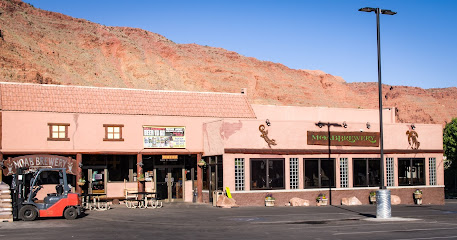
Corona Arch
Explore the breathtaking Corona Arch in Moab, Utah—a stunning natural wonder perfect for hiking and photography amidst dramatic red rock landscapes.

Base Jump Moab
Experience unparalleled adventure at Base Jump Moab, where skydiving, national parks, and cozy café vibes come together in stunning Utah landscapes.

Moab Information Center
Discover Moab's stunning landscapes and outdoor adventures at the Moab Information Center, your ultimate travel companion in Utah's red rock country.

Outlaw Adventure Jeep and Polaris RZR Tours
Discover the breathtaking landscapes of Moab, Utah with thrilling Jeep and Polaris RZR tours from Outlaw Adventure.

Moab Food Truck Park
Discover a culinary paradise at Moab Food Truck Park, where local flavors and vibrant dishes meet in a stunning outdoor setting.

Epic 4X4 Adventures
Experience the ultimate off-road adventure at Epic 4X4 Adventures in Moab, where breathtaking landscapes meet thrilling excursions.

Slickrock Bike Trail
Discover the breathtaking Slickrock Bike Trail in Moab, Utah – a thrilling mountain biking adventure through stunning desert landscapes.

Navtec Expeditions
Explore breathtaking landscapes and thrilling adventures with Navtec Expeditions in Moab, Utah - your gateway to unforgettable outdoor experiences.

Moab Cowboy Off-Road Adventures
Experience the thrill of off-roading in Moab; explore breathtaking landscapes and create unforgettable memories with Moab Cowboy Off-Road Adventures.

Unmissable attractions to see
Arches National Park
Explore the breathtaking landscapes and iconic rock formations of Arches National Park in Utah, a must-visit for nature lovers and adventurers.

Arches National Park Visitor Center
Explore the breathtaking landscape of Arches National Park at the Visitor Center, your gateway to iconic natural arches and stunning vistas.

Dead Horse Point State Park
Discover the stunning vistas and outdoor adventures at Dead Horse Point State Park, a must-visit destination near Moab, Utah.

Dead Horse Point State Park
Discover the breathtaking views and outdoor adventures at Dead Horse Point State Park, a natural wonder near Moab, Utah, perfect for tourists and nature lovers.

Mesa Arch
Discover the breathtaking beauty of Mesa Arch in Utah's Canyonlands National Park, a top destination for nature lovers and photographers alike.

Hole 'N' The Rock
Explore the unique Hole 'N' The Rock in Moab, Utah — a fascinating house carved into a rock, combined with a delightful zoo and gift shop.

Moab Adventure Center
Experience the thrill of adventure sports at Moab Adventure Center, your gateway to unforgettable outdoor activities in Utah's stunning landscapes.

Island in the Sky Visitor Center
Discover breathtaking views and vital information at the Island in the Sky Visitor Center, your gateway to Canyonlands National Park in Moab, Utah.

Moab Giants
Explore Moab Giants, an open-air museum featuring life-sized dinosaur replicas and interactive exhibits amidst Utah's stunning landscape.

Moab Giants
Discover the prehistoric world at Moab Giants, an open-air museum featuring life-sized dinosaur replicas and interactive exhibits in breathtaking Utah.

Double Arch
Experience the breathtaking beauty of Arches National Park, home to stunning rock formations and endless outdoor adventures in Utah's majestic landscape.

Double Arch
Explore the majestic Double Arch in Moab, Utah, a breathtaking natural wonder and a highlight of Arches National Park's stunning landscapes.

Red River Adventures
Experience the thrill of rafting and rock climbing at Red River Adventures in Moab, Utah. Your ultimate outdoor adventure awaits amidst stunning landscapes.
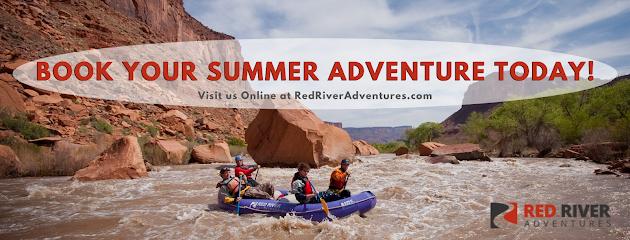
Green River Overlook
Experience the stunning vistas of the Green River Overlook in Moab, Utah, where nature's beauty unfolds in breathtaking panoramic views.

Corona Arch
Explore the breathtaking Corona Arch in Moab, Utah – a must-see for nature lovers and adventure seekers alike.
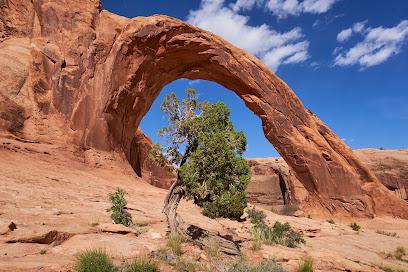
Essential places to dine
Moab Diner
Experience authentic American diner cuisine at Moab Diner – where comfort food meets local charm in beautiful Moab, Utah.

Zax Restaurant
Experience delectable American cuisine at Zax Restaurant in Moab—home of gourmet burgers, tasty pizza, and vibrant dining atmosphere.

Fiesta Mexicana
Experience authentic Mexican cuisine at Fiesta Mexicana in Moab - where vibrant flavors meet welcoming hospitality.

The Blu Pig
Experience mouthwatering barbecue at The Blu Pig in Moab – where great food meets live music in a family-friendly setting.

Pasta Jay's
Savor authentic Italian cuisine at Pasta Jay's in Moab - where every bite tells a story amidst breathtaking landscapes.
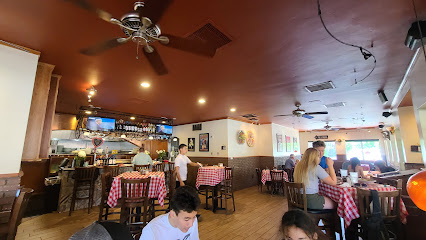
Milt's Stop & Eat
Discover Milt's Stop & Eat in Moab - where delicious burgers meet breathtaking views in a cozy atmosphere.

Giliberto's Mexican Taco Shop
Experience authentic Mexican cuisine in Moab at Giliberto's Taco Shop – where flavor meets affordability amidst stunning landscapes.

The Spoke on Center
Experience flavorful hamburgers and delightful ice creams at The Spoke on Center in Moab—a perfect blend of taste and atmosphere.
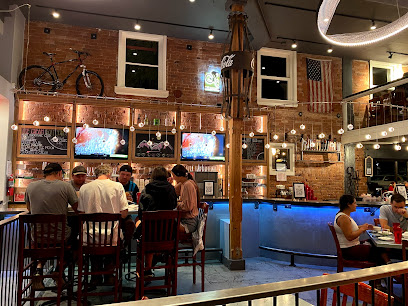
Antica Forma
Discover authentic Italian flavors at Antica Forma in Moab – where every meal is a celebration of culinary tradition.

The Broken Oar
Experience the best of American barbecue and steak at The Broken Oar in Moab - where flavor meets adventure!

Moab Brewery
Discover locally brewed craft beers and delicious American cuisine at Moab Brewery in beautiful Moab, Utah.

Sunset Grill
Experience culinary excellence at Sunset Grill in Moab, where prime steaks meet stunning sunset views over Utah's breathtaking landscapes.

Arches Thai
Savor authentic Thai flavors at Arches Thai in Moab - a culinary oasis amidst breathtaking desert scenery.

Moab Grill Restaurant
Discover delicious American cuisine at Moab Grill Restaurant – your perfect dining destination while exploring Utah's stunning landscapes.
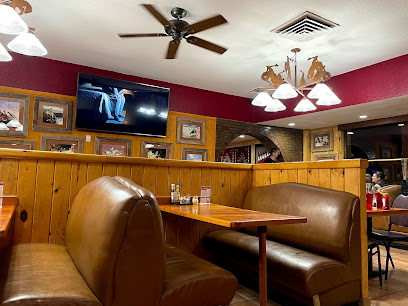
Sultan Mediterranean Grill
Discover authentic Mediterranean flavors at Sultan Mediterranean Grill in Moab - where fresh ingredients meet warm hospitality.

Markets, malls and hidden boutiques
Moab Rock Shop
Explore the geological treasures and unique gifts at Moab Rock Shop, a must-visit attraction in the heart of Utah's stunning landscapes.

Gearheads Outdoor Store
Discover Gearheads Outdoor Store in Moab for top-quality outdoor gear and clothing, perfect for your Utah adventure!

Moonflower Community Cooperative
Explore the flavors of Moab at Moonflower Community Cooperative, a grocery store and community hub offering organic produce and local delicacies.

Moab Gear Trader
Explore Moab's stunning landscapes with the best outdoor gear and expert advice from Moab Gear Trader, your local adventure hub.

The Village Market
Explore local flavors and fresh produce at The Village Market in Moab, the perfect grocery store for tourists seeking unique culinary experiences.

Back of Beyond Book Store
Explore an extensive collection of new and locally inspired books at Back of Beyond Book Store in Moab, a must-visit for every book lover.

The T-Shirt Shop
Discover the essence of Moab with unique t-shirts that capture the spirit of adventure and local culture.

Lema's Kokopelli Gallery
Explore Lema's Kokopelli Gallery in Moab, UT, where art, culture, and unique gifts come together in a vibrant setting.
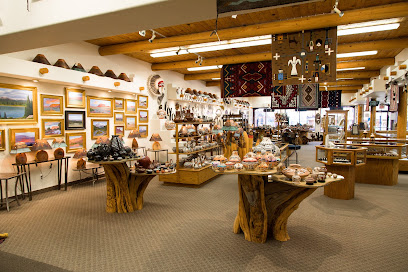
Arches Trading Post
Discover unique souvenirs and local crafts at Arches Trading Post in Moab, Utah, a perfect stop for every traveler.

Millers Shopping Center
Discover Millers Shopping Center in Moab, Utah, where shopping meets local culture and dining delights await, all in a welcoming atmosphere.

Moab Made
Explore Moab Made for unique gifts and local art that embody the spirit of Utah's stunning landscapes and creative community.

Hogan Trading Company
Explore Hogan Trading Company for unique gifts and art that showcase the beauty of Utah’s landscape and culture.

Pagan Mountaineering
Explore Moab's stunning landscapes with top-notch gear from Pagan Mountaineering, your go-to outdoor sports store for climbing, hiking, and camping.

Simply Moab
Discover unique souvenirs and stylish apparel at Simply Moab, the must-visit gift shop in the heart of Moab, Utah.

Desert Dreams
Explore unique local gifts and souvenirs at Desert Dreams Gift Shop in Moab, Utah, capturing the spirit of the desert in every find.

Essential bars & hidden hideouts
Zax Restaurant
Experience the best of American cuisine at Zax Restaurant in Moab, where every meal is a celebration of flavor and fun.

The Blu Pig
Savor the best barbecue and live music in Moab at The Blu Pig, where every meal is a celebration of flavor and fun.

The Spoke on Center
Experience the best of Moab dining at The Spoke on Center, offering delicious burgers, pasta, and ice cream in a vibrant atmosphere.

The Broken Oar
Discover The Broken Oar in Moab, UT, where American flavors meet barbecue delights in a cozy setting perfect for relaxation and enjoyment.

Moab Brewery
Discover Moab Brewery: A quintessential brewpub offering craft beers and hearty American dishes in the heart of scenic Moab, Utah.

Sunset Grill
Dine in style at Sunset Grill, Moab's premier steakhouse, offering exceptional cuisine and stunning views of Utah's breathtaking landscapes.

Moab Grill Restaurant
Discover the rich flavors of American cuisine at Moab Grill Restaurant, a local favorite in the heart of Utah's stunning landscapes.

Spitfire Smokehouse + Taps
Experience the best of barbecue and local brews at Spitfire Smokehouse + Taps in Moab, the ultimate destination for food lovers.

Dewey's Restaurant and Bar
Discover the taste of America at Dewey's Restaurant and Bar in Moab, Utah, where delicious dishes and a warm atmosphere await you.
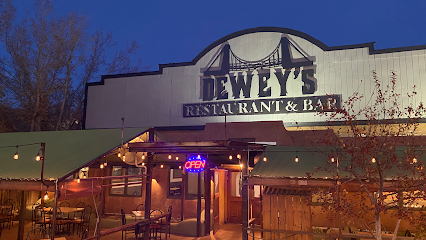
Trailhead Public House and Eatery
Savor the flavors of Moab at Trailhead Public House and Eatery, where local ingredients meet hearty comfort food in a vibrant setting.
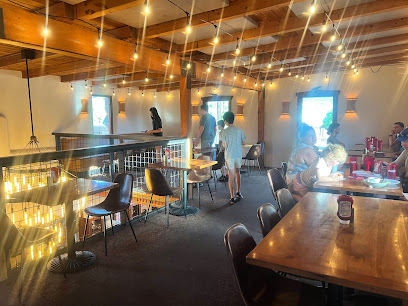
Desert Bistro
Experience the exquisite flavors of American cuisine at Desert Bistro, Moab's premier fine dining destination, blending local ingredients and culinary artistry.
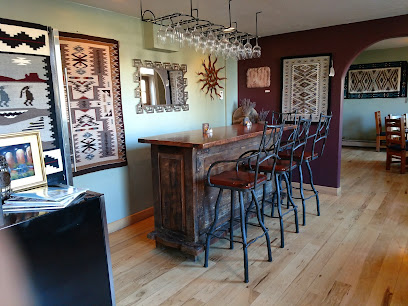
Cactus Jacks Moab
Discover the flavors of America at Cactus Jacks Moab, a charming bar and restaurant offering breakfast, brunch, and lunch in the heart of Utah's scenic landscape.
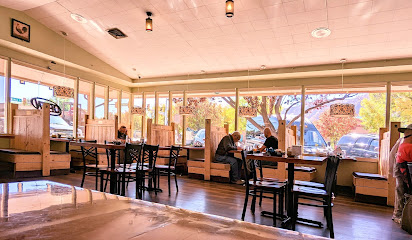
Josie Wyatt's Grille
Discover the heart of American cuisine at Josie Wyatt's Grille, a lively restaurant in Moab offering delicious dishes and a welcoming atmosphere.

World Famous Woody's Tavern
Discover the lively atmosphere and delicious offerings at Woody's Tavern, a premier bar in the heart of Moab, Utah, perfect for relaxation after adventure.

Proper Brewing & Burger Co.
Experience the best of Moab with gourmet burgers and local brews at Proper Brewing & Burger Co., your culinary retreat in the heart of Utah.

Local Phrases
-
- HelloHowdy
[haw-dee] - GoodbyeSee ya
[see yuh] - YesYup
[yuhp] - NoNope
[nohp] - Please/You're welcomePlease/You're welcome
[pleez / yur wel-come] - Thank youThanks
[thanks] - Excuse me/SorryPardon me
[par-dun me] - How are you?Howdy do?
[haw-dee doo] - Fine. And you?Just fine. And you?
[just fine. and yuh?] - Do you speak English?Y'all speak English?
[yawl speak ing-glish?] - I don't understandI ain't gettin' it
[eye aint get-tin it]
- HelloHowdy
-
- I'd like to see the menu, pleaseI reckon I'll take a gander at the menu, if you don't mind
[eye reck-un eye'll take uh gan-der at the menu, if yuh don't mind] - I don't eat meatI don't fancy no meat
[eye don't fan-see no meat] - Cheers!Cheers!
[cheers] - I would like to pay, pleaseI reckon it's time to settle up
[eye reck-un its time to set-tul up]
- I'd like to see the menu, pleaseI reckon I'll take a gander at the menu, if you don't mind
-
- Help!Help!
[help!] - Go away!Git!
[git!] - Call the Police!Call the Sheriff!
[call the sher-iff!] - Call a doctor!Get a doc!
[get uh doc!] - I'm lostI'm turned around
[eye'm turned uh-round] - I'm illI'm feelin' poorly
[eye'm feel-in poor-ly]
- Help!Help!
-
- I'd like to buy...I reckon I'll buy...
[eye reck-un eye'll buy...] - I'm just lookingJust browsin'
[just brow-zin] - How much is it?How much fer that?
[how much fur that?] - That's too expensiveThat's a bit steep
[that's uh bit steep] - Can you lower the price?Can y'all do any better on the price?
[can yawl do any bet-ter on the price?]
- I'd like to buy...I reckon I'll buy...
-
- What time is it?What's the hour?
[whats the hour?] - It's one o'clockIt's one o'clock
[its one o'clock] - Half past (10)Half past (10)
[half past (10)] - MorningMornin'
[morn-in] - AfternoonAfternoon
[after-noon] - EveningEvenin'
[even-in] - YesterdayYest'day
[yest-day] - TodayToday
[to-day] - TomorrowTomorruh
[tom-uh-ruh] - 1One
[wun] - 2Two
[too] - 3Three
[three] - 4Four
[four] - 5Five
[five] - 6Six
[six] - 7Seven
[seven] - 8Eight
[ate] - 9Nine
[nine] - 10Ten
[ten]
- What time is it?What's the hour?
-
- Where's a/the...?Where's a/the...?
[wheres a/the...?] - What's the address?What's the address?
[whats the address?] - Can you show me (on the map)?Can you show me (on the map)?
[can you show me (on the map)?] - When's the next (bus)?When's the next (bus)?
[whens the next (bus)?] - A ticket (to ....)A ticket (to ....)
[a ticket (to ....)]
- Where's a/the...?Where's a/the...?
History of Moab
-
The region around Moab has been inhabited for thousands of years, with evidence of the Ancestral Puebloans, also known as the Anasazi, dating back to as early as 10,000 BCE. These indigenous people left behind fascinating remnants, including cliff dwellings, rock art, and pottery. The petroglyphs and pictographs found in sites like Courthouse Wash and along the Colorado River offer a glimpse into their rich cultural heritage.
-
Following the Ancestral Puebloans, the Ute Tribe became the primary inhabitants of the Moab region. The Utes were nomadic hunter-gatherers who thrived in the challenging environment of the Colorado Plateau. They utilized the area's natural resources, such as game and plants, and established seasonal camps. The Utes played a significant role in the cultural landscape of Moab before the arrival of European settlers.
-
In 1776, the Dominguez-Escalante Expedition, led by two Spanish Franciscan priests, became the first recorded European exploration of the Moab area. Their mission was to find a route from Santa Fe to California. Although their journey was arduous and ultimately unsuccessful, the expedition provided valuable geographic information and marked the beginning of European interest in the region.
-
By the early 19th century, the Old Spanish Trail, a trade route connecting Santa Fe, New Mexico, to Los Angeles, California, passed through the Moab region. This trail was used by traders, trappers, and explorers and played a crucial role in the exchange of goods, culture, and ideas between the American Southwest and the Pacific Coast. The trail's presence contributed to the development of Moab as a waypoint and hub for travelers.
-
In the late 19th century, Mormon settlers began to establish a permanent presence in the Moab area. In 1855, the Elk Mountain Mission was founded by members of The Church of Jesus Christ of Latter-day Saints, but it was abandoned due to conflicts with local Native American tribes. It wasn't until 1878 that the town of Moab was officially established. The settlers focused on agriculture, utilizing the fertile land along the Colorado River to grow crops and support their growing community.
-
The mid-20th century brought significant change to Moab with the discovery of uranium. In the 1950s, Moab became known as the 'Uranium Capital of the World' as prospectors flocked to the area in search of the valuable mineral. The uranium boom led to rapid population growth and economic prosperity, transforming Moab from a quiet agricultural town into a bustling mining center. Although the boom eventually subsided, its impact on the town's development was profound.
-
In the latter half of the 20th century, Moab's economy shifted from mining to tourism, driven by the area's stunning natural landscapes. The establishment of Arches National Monument (later Arches National Park) in 1929 and Canyonlands National Park in 1964 helped to put Moab on the map as a premier destination for outdoor recreation. Activities such as hiking, mountain biking, and off-roading attract visitors from around the world, making tourism a cornerstone of Moab's modern economy.
Moab Essentials
-
Moab is located in southeastern Utah, accessible via several routes. The nearest major airport is Salt Lake City International Airport, approximately 234 miles away, from which you can rent a car or take a shuttle service to Moab. Alternatively, you can fly into Canyonlands Field Airport, situated just 18 miles north of Moab, which offers regional flights from Denver and other nearby cities. For those driving, Moab is conveniently located off U.S. Route 191.
-
Moab is a relatively small town, making it easy to navigate on foot or by bicycle. For exploring the surrounding national parks and attractions, renting a car is highly recommended. Local shuttle services are available for popular destinations such as Arches National Park and Canyonlands National Park. Taxis and ride-sharing services like Uber and Lyft can also be found, though they may be less frequent.
-
The official currency in Moab, as in the rest of the United States, is the U.S. Dollar (USD). Credit and debit cards are widely accepted in most establishments, including restaurants, hotels, and shops. It is advisable to carry some cash for smaller businesses or when visiting more remote areas. ATMs are readily available throughout the town.
-
Moab is generally a safe destination for tourists. However, it is always wise to take standard precautions: avoid leaving valuables in your car, especially in visible locations, and be mindful of your surroundings, particularly at night. There are no specific high-crime areas targeting tourists, but it is always best to stay vigilant. When hiking or exploring remote areas, ensure you have adequate supplies and let someone know your plans.
-
In case of emergency, dial 911 for immediate assistance. Moab has a local police department, fire department, and medical facilities, including Moab Regional Hospital, which can handle most medical emergencies. It is advisable to have travel insurance that covers medical emergencies. For minor health issues, there are several pharmacies in town where you can purchase over-the-counter medications.
-
Fashion: Do dress comfortably and appropriately for outdoor activities. Wear layers as temperatures can vary greatly. Avoid wearing flip-flops or sandals when hiking. Religion: Do respect local customs and the natural environment. Public Transport: Do be patient and courteous when using local shuttle services. Don't expect extensive public transportation options. Greetings: Do greet people with a friendly 'hello' or 'hi.' Handshakes are common, but not necessary. Eating & Drinking: Do try the local cuisine and support local restaurants. Don't leave trash behind; practice 'Leave No Trace' principles.
-
To experience Moab like a local, visit the Moab Farmers Market, held weekly, where you can purchase fresh produce and local crafts. Engage with locals, who are often friendly and eager to share tips on hidden gems and lesser-known trails. Don't miss out on visiting the local breweries and coffee shops, which offer a taste of the local culture. For a unique experience, consider joining a guided tour for activities like rock climbing, canyoneering, or river rafting.
Trending Landmark in Moab
-
Dead Horse Point State Park
-
Wilson Arch
-
Hole 'N' The Rock
-
Moab Rock Shop
-
Moab Adventure Center
-
Moab Brewery
-
Corona Arch
-
Base Jump Moab
-
Moab Information Center
-
Outlaw Adventure Jeep and Polaris RZR Tours
-
Moab Food Truck Park
-
Epic 4X4 Adventures
-
Slickrock Bike Trail
-
Navtec Expeditions
-
Moab Cowboy Off-Road Adventures
Nearby Cities to Moab
-
Things To Do in Green River
-
Things To Do in Grand Junction
-
Things To Do in Blanding
-
Things To Do in Montrose
-
Things To Do in Huntington
-
Things To Do in Price
-
Things To Do in Torrey
-
Things To Do in Ouray
-
Things To Do in Duchesne
-
Things To Do in Ephraim
-
Things To Do in Escalante
-
Things To Do in Durango
-
Things To Do in Vernal
-
Things To Do in Glenwood Springs
-
Things To Do in Richfield













